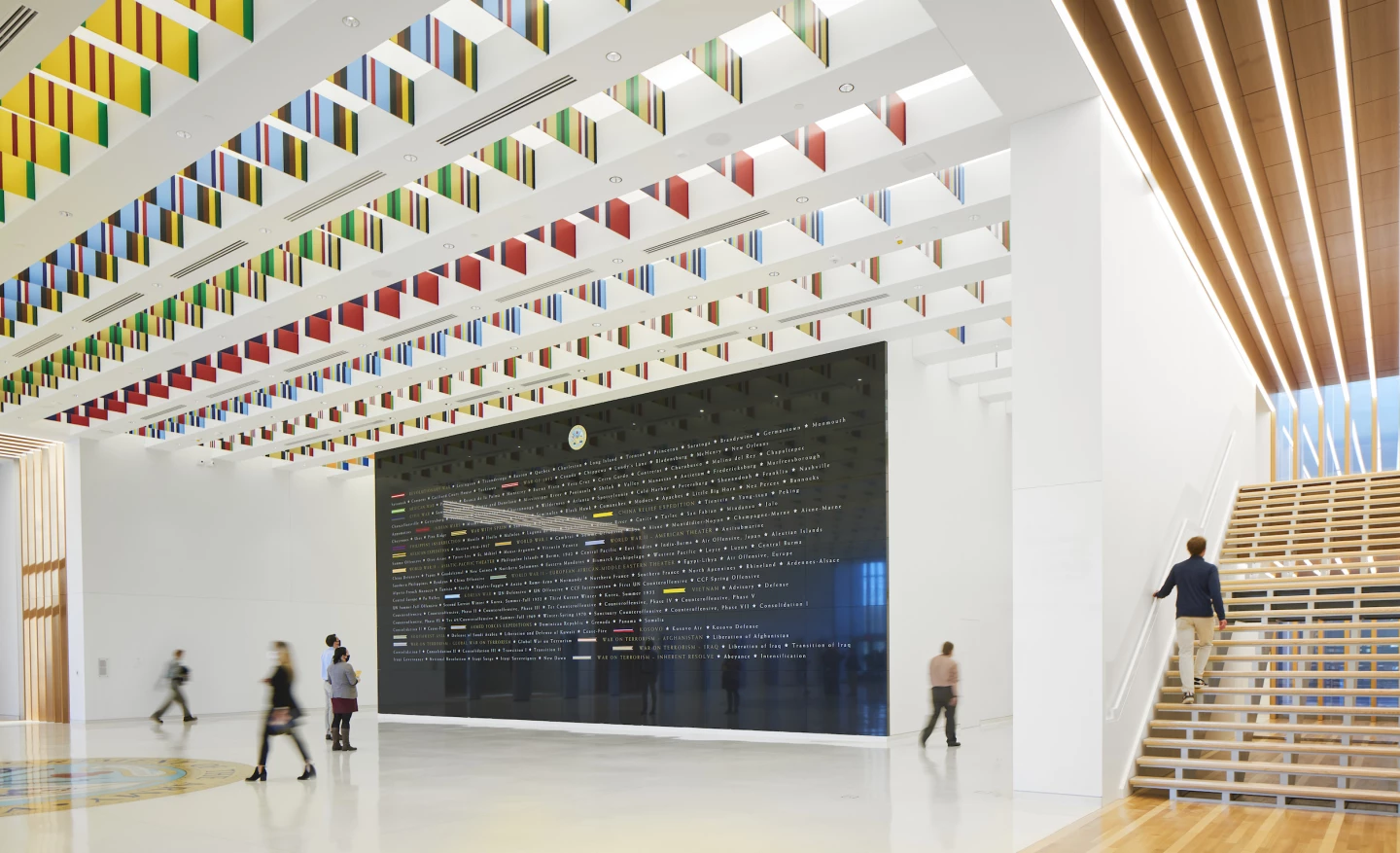High-profile architecture firm Skidmore, Owings & Merrill (SOM) recently completed work on the National Museum of the United States Army (NMUSA). Representing the first museum dedicated to telling the story of the entire US Army, the building features a striking stainless steel facade and reduces its energy usage with sustainability features like a green roof and a focus on natural lighting.
The NMUSA is located near Washington, D.C. and measures 185,000 sq ft (roughly 17,190 sq m), spread over a series of buildings, on a large site spanning 84 acres (33 hectares). Its exterior is certainly eye-catching and is mostly made from stainless steel, though each corner has recessed glass panels covered with painted aluminum fins that are spaced exactly 18 in (45.72 cm) apart.
"The symbolic experience begins with the access road, which offers a glimpse of the stainless steel-clad museum through the trees and across a long meadow," says SOM in a press release. "The museum rises to 100 ft (30 m) at its peak, and its facade is composed of a regular grid of laser-cut, stainless steel panels that establish the sense of rigor and discipline that are central to the design. The panels reflect their bucolic surroundings – expressing a sense of optimism by transforming the building's character through every season and time of day. At the corner of each pavilion, recessed glass panels alternate with painted aluminum fins to add a sense of dynamism."

Inside, the museum is finished in stone floors, white oak and ash. A series of rectangular stainless steel markers feature stories of individual soldiers etched onto their surface and lead visitors into the exhibition hall. In the grand lobby, which can also be used as an event space, a black granite wall lists every campaign from the Army's history. The ceiling sports 22 rows of laminated glass panels matching the colors of campaign streamers from the Army's past.
Elsewhere there's a retail space, a cafe, three landscaped terraces, exhibition spaces, a theater, and a large monumental staircase leading visitors to additional exhibition spaces on the second floor. On the uppermost third floor, a wood-clad Veterans' Hall serves as a light-filled events space and connects to the Medal of Honor Garden, which is a ceremonial terrace defined by a black granite wall engraved with the names of every medal recipient. Striped granite paving is emblazoned with the Army Medal of Honor's emblem and stainless steel stars.
While it would be an exaggeration to consider this huge stainless steel building environmentally friendly, it has been awarded LEED Silver (a green building standard) due to its energy-efficient design. This includes large amounts of insulation to reduce hating and cooling needs, a focus on using glazing to ensure natural light illuminates the interior, energy-efficient LED lighting, automatic daylighting controls, occupancy sensors that turn off lights and heating when areas are not in use, and a green roof which further boosts insulation.
The NMUSA opened to visitors on November 11, which is recognized as Veteran's Day in the US.










